What’s in a Name?
For many of us, botanical names (aka scientific or Latin names) can be intimidating. After all, they are in Latin or sometimes Greek, both of which are unfamiliar languages to most of us. They can be hard to pronounce, let alone understand or remember. But once we take the pressure off and have a closer look, we start to see that the botanical names can be an insight to how that plant was perceived when given its official name which, at times, can be a help in identifying, choosing, talking about and caring for our plants.
Common names vs botanical names
But why not just use common names? While they may seem obvious to us, common names can mean different things to different people even within the same language and region but becomes even harder once you deal with someone in a different language. This makes it confusing and misleading if you are wanting to buy a plant, learn how to care for it or simply tell a neat story about it as the person at the other end might think you are talking about a completely different species.
- For instance, some plants have multiple common names like Aquilegia brevistyla which is called Blue Columbine, Yukon Columbine and Small-flowered Columbine. At least they all have columbine in their name, but then there is Asclepias tuberosa which is also called Butterflyweed, Orange milkweed and Pleurisy root!
- On the other hand, the same common name can also be used for very different plants, such as Brown-eyed Susans that could refer to a huge variety of different plants that happen to have yellow petals and dark centres. Goatsbeard could refer to Aruncus dioicus, a bushy native perennial (which also has other names like bride’s feathers and buck’s beard!) or Tragopogon dubius, a non-native plant found growing at the side of the road (also known as Yellow Salsify, Yellow Goatsbeard, Western Salsify and Wild Oysterplant).
- In addition to this, even if you are familiar with the common name, it can be written different ways, such as Brown-eyed Susans that sometimes drop the ‘d’ to just be ‘eye’ or drop the hyphen or simply use ‘black’ instead of ‘brown’. Other examples include Goat’s Beard/Goatsbeard and Butterflyweed/Butterfly Weed/Butterfly Milkweed
Botanical names were created so that each plant can be clearly identified with one official name that is recognized worldwide. That said, as helpful as they are, be warned that botanists tend to change names over time due to regrouping plants from time to time!
The parts of a botanical name
Botanical names typically have two words. The first refers to the genus (genera for plural) which is a group that the
plant belongs to thanks to characteristics those plants share.
The second word, called a specific epithet, indicates the actual species.
Both words are always written in italics, with the genus capitalized and the epithet in lowercase.
For example, the Rose Family (families are a higher level of grouping) has several genera including:
⦁ Rubus (raspberries and blackberries)
⦁ Prunus (plums and cherries) and
⦁ Amelanchier (serviceberries)
Each of those genera have species like:
⦁ Rubus occidentalis (Black Raspberry)
⦁ Prunus virginiana (Choke Cherry) and
⦁ Amelanchier alnifolia (Saskatoon Serviceberry)
Botanical names as clues
The terms here refer to the specific epithet of a botanical name to shed a bit of light as to why a plant was given its
name. They can sometimes be clues to let you know what others have seen in them – their growth style, their appearance
or region they were found in. Sometimes the name, however, relates to the person who gave the plant its official name,
as in ‘lewisii’ after a scientific explorer named Meriwether Lewis.
The characteristic is not always obvious to the observer and further down, in the “Country where found” section, keep in
mind that the plant’s native range may extend beyond the word in their name, as some implying Canada are also found in
America and vice versa.
To demonstrate the terms, plants are listed below each term. All are native with the exception of Echinacea purpurea which
is a popular plant that was introduced but not considered invasive.
Colour or shading
Quercus alba (White Oak); The ‘white’ may come from the look of the finished wood or perhaps because Indigenous cultures referred to smooth white patches that occur on the bark due to a fungal infection.
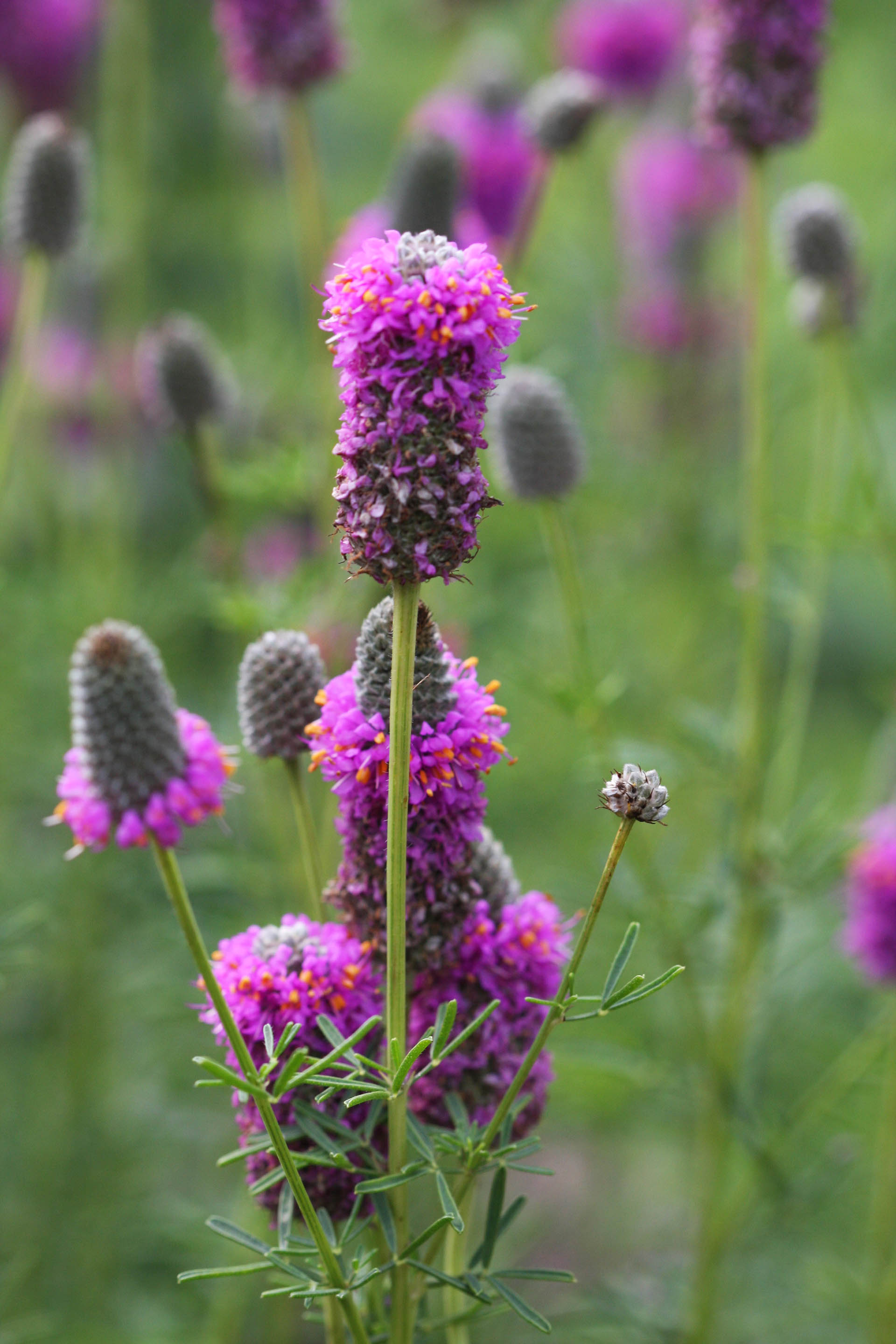

Likely referring to the petals which are pink with a purple tone in these flowers: Echinacea purpurea (Purple Coneflower) Eutrochium purpureum (Sweet Joe Pye weed, Sweet-scented Joe Pye Weed) Dalea purpurea (Purple prairie clover)
Prunus nigra (Canada Plum, Black Plum) whose bark and branches become darker with age.
Acer rubrum (Red Maple) whose foliage turns a brilliant red in the autumn. Alnus rubra (Oregon Alder, Red Alder, Western Alder) whose bark was used as a dye by Indigenous people. Also, its freshly cut wood has a bright red colour before turning orange-brown.
Echinacea pallida (Pale Purple Coneflower) which has pale pink petals
Overall appearances or specific features:
Penstemon gracilis (Lilac Penstemon, Slender Beardtongue, Slender Penstemon). While penstemons are delicate-looking in general, this species has been considered especially so.
Oenothera fruticosa (Narrowleaf Evening Primrose, Sundrops) which forms a dense clump.
Celastrus scandens (American bittersweet, Climbing Bittersweet) is a climbing woody vine.
Spiraea tomentosa (Rosy meadowsweet, Steeplebush, Tomentose Meadowsweet, Hardhack) is densely hairy on the underside of its leaves.
Penstemon hirsutus (Hairy beardtongue, hairy penstemon) which has white hairs on its stems.
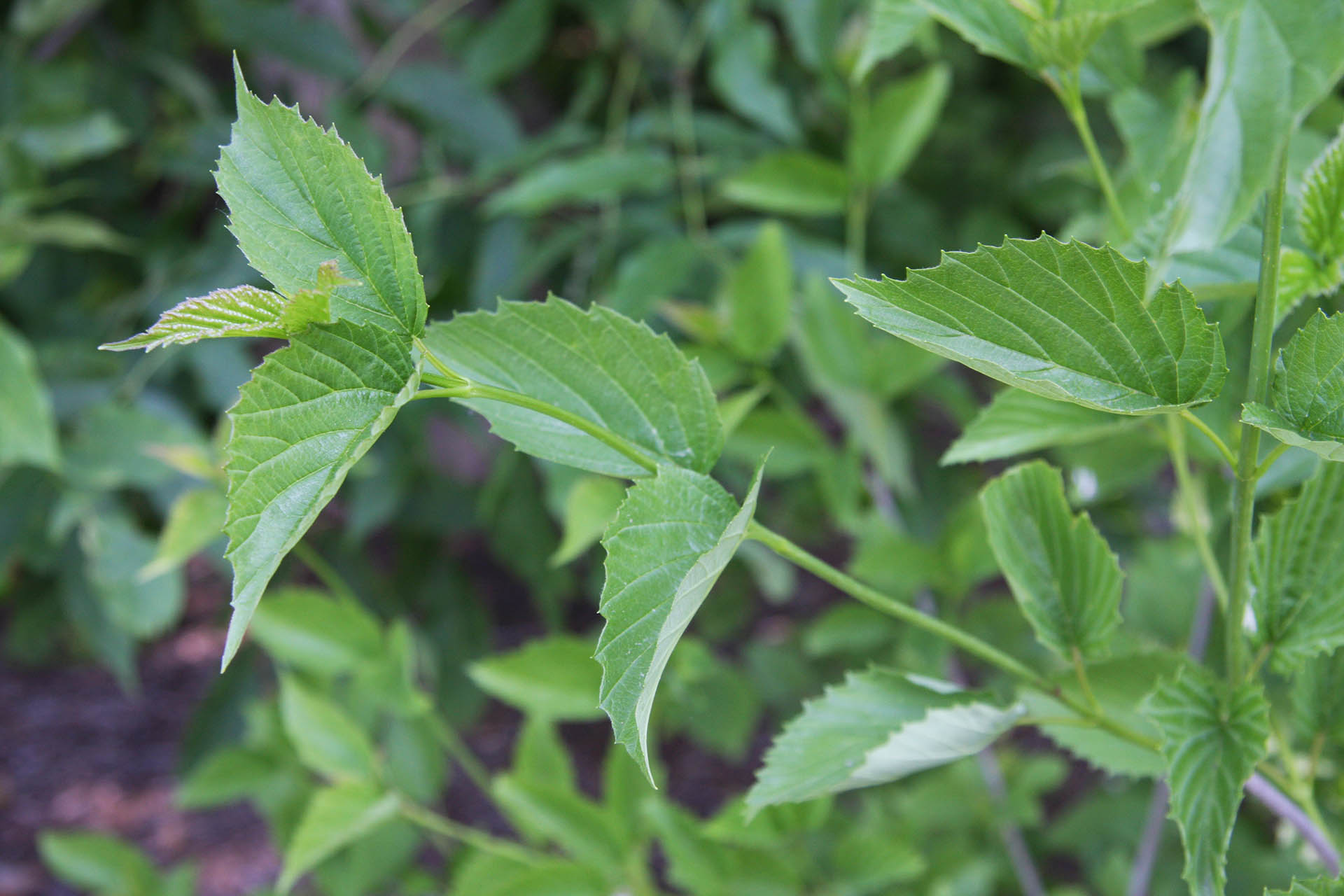
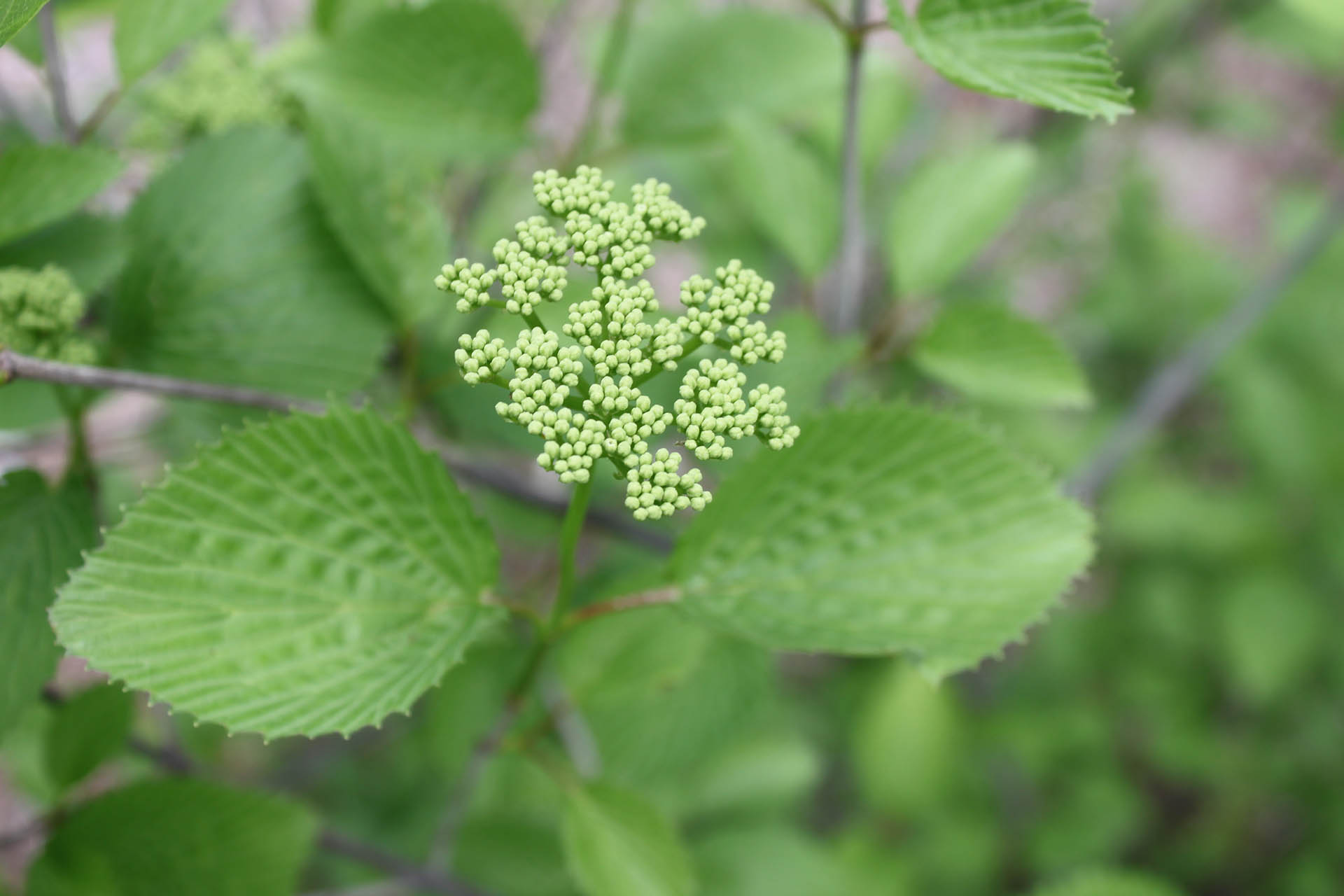
Viburnum dentatum (Arrowwood Viburnum) has toothed leaves, meaning the leaves have serrations or a series of points along the edge.
Eutrochium maculatum, formerly called Eupatorium maculatum (Spotted Joe Pye weed) can have purplish spotting on its stems.
Nymphaea odorata (White Water Lily, American Water Lily, Fragrant Water Lily)
Echinacea angustifolia (Narrow-leaved Purple Coneflower, Purple Prairie Coneflower)

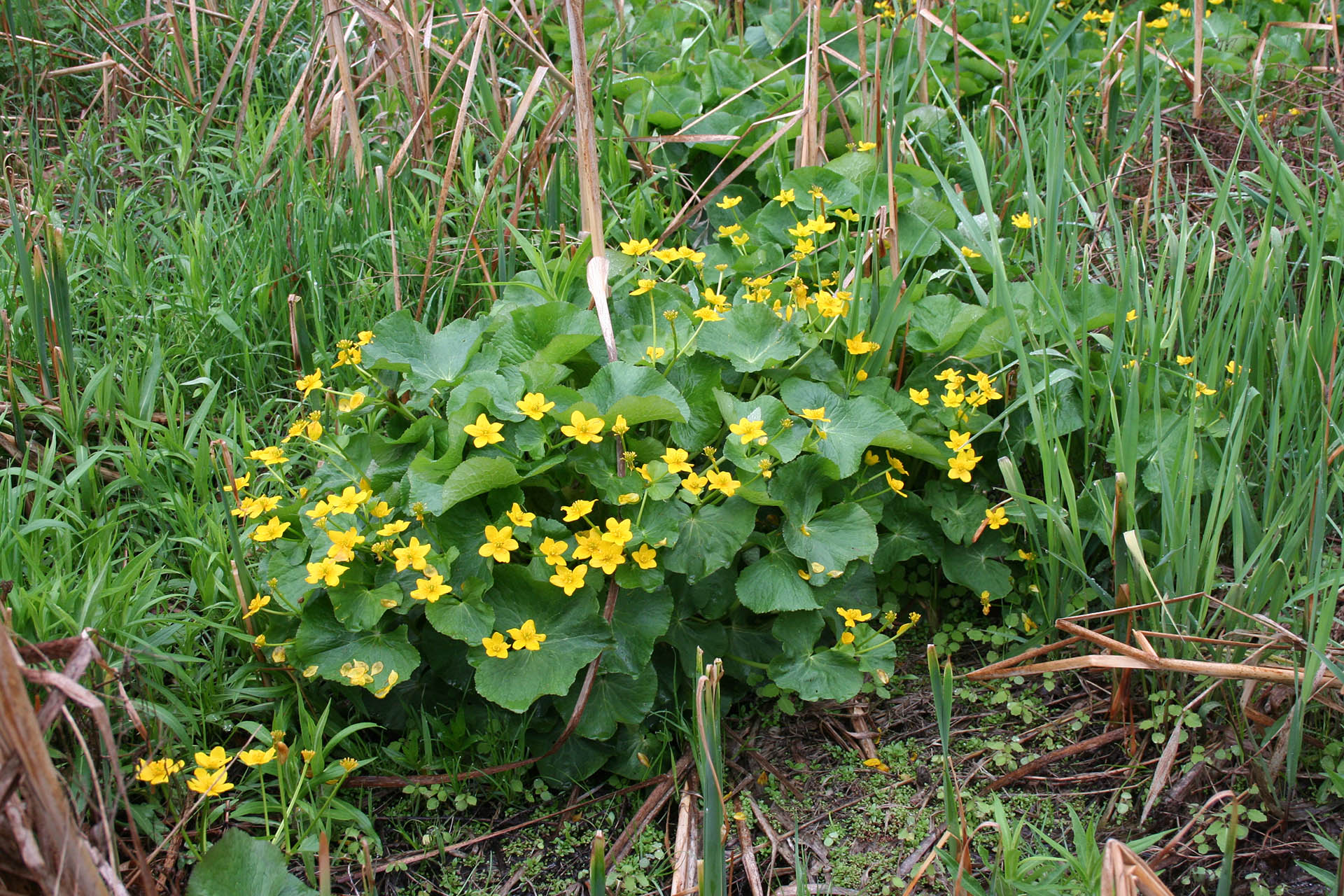
These plants grow in wet areas:
Caltha palustris (Marsh Marigold, Cowslip, American Cowslip)
Rosa palustris (Swamp Rose, Marsh Rose)
Campanula rotundifolia (Bluebell, Bluebells of Scotland, Harebell) have round to heart-shaped leaves at the base of the plant.
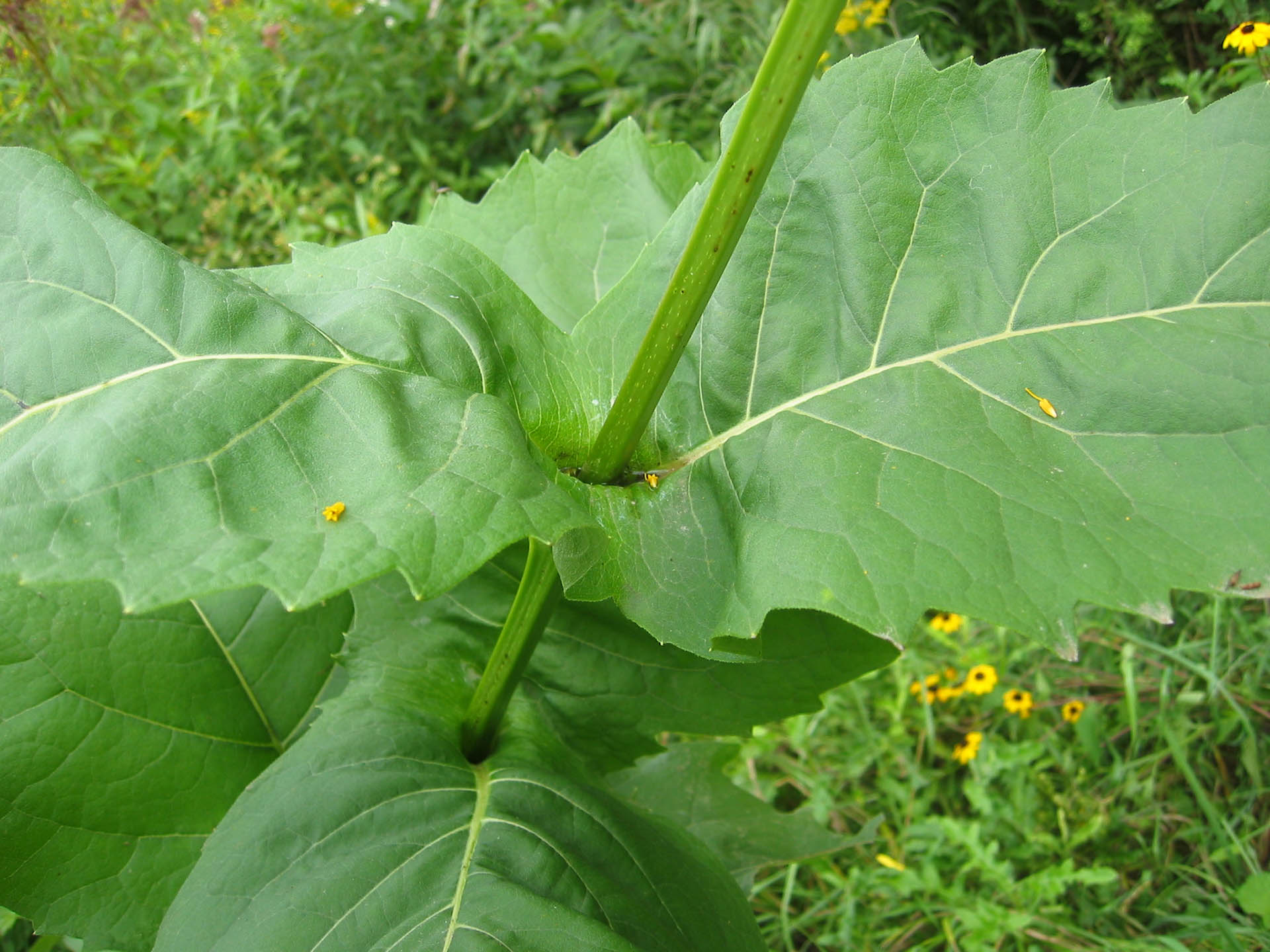
Eupatorium perfoliatum (Boneset)
Silphium perfoliatum (Cup plant)
Helianthus giganteus (Giant sunflower, Tall Sunflower)
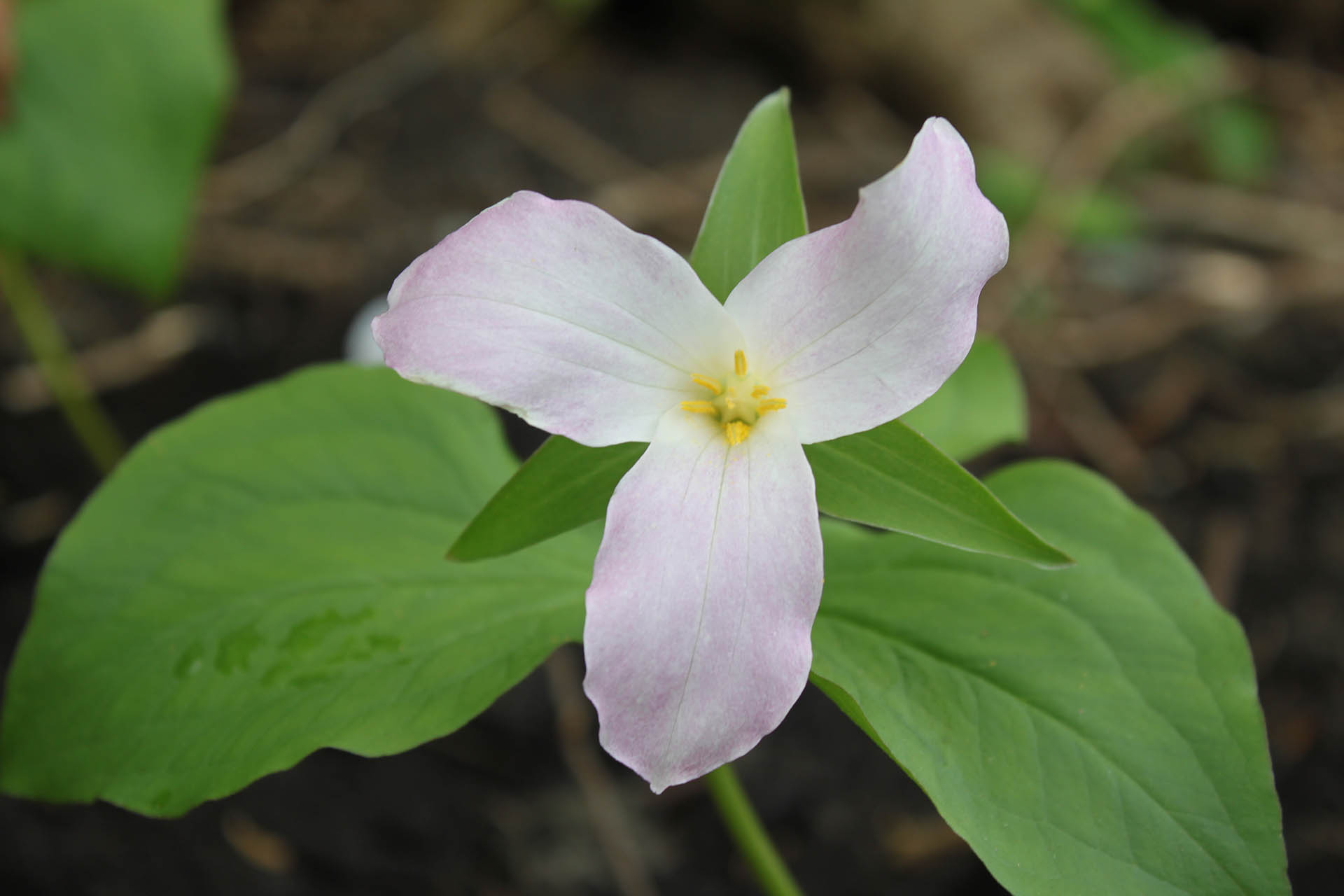
Both these spring blooming woodland plants have large flowers compared to other species in their genus:
Trillium grandiflorum (White Trillium)
Uvularia grandiflora (Big Merrybells, Large-flowered Bellwort)
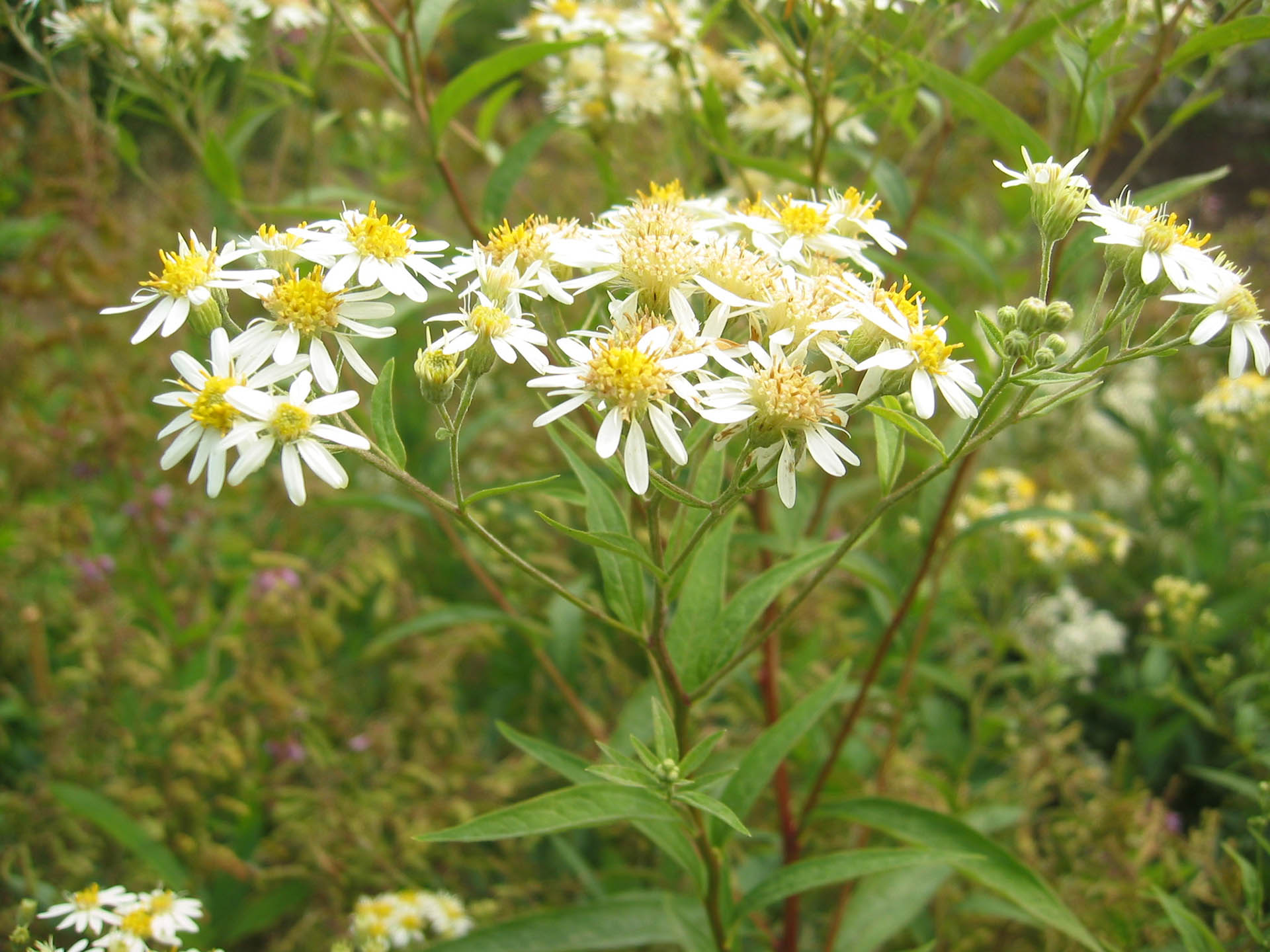
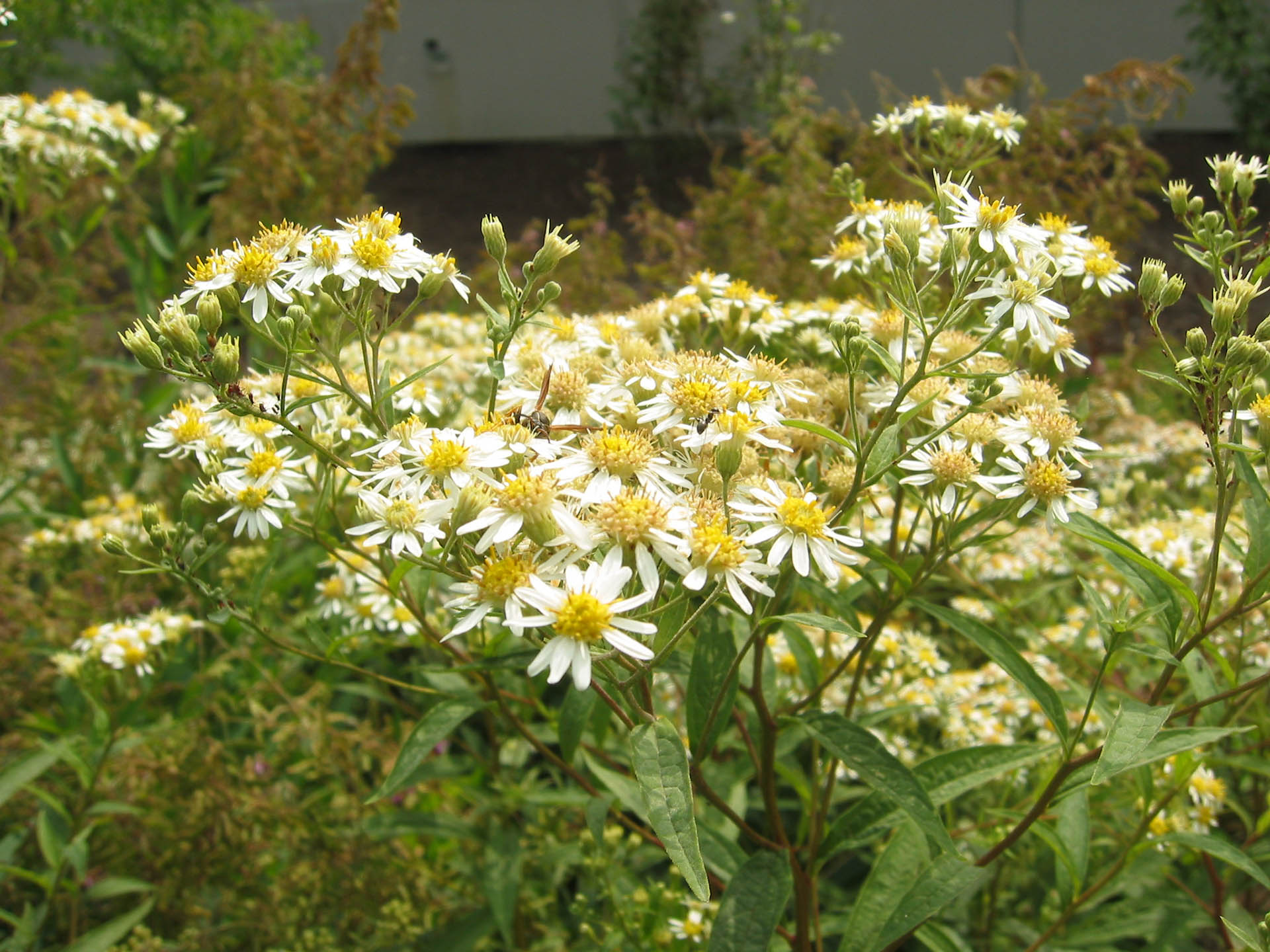
Doellingeria umbellata (Flat-topped White Aster, Parasol Whitetop)
Maianthemum stellatum (Starry False Solomon's Seal, Starry False Lily of the valley) has delicate white flowers that have a starry sort of look.
Country where found, region where it grows:
Maianthemum canadense (Canada Mayflower, Wild Lily of the Valley)
Hepatica americana (Round-lobed Hepatica)
Clintonia borealis (Bluebead Lily) is found in boreal forests but can also be found south to the Northern US.
